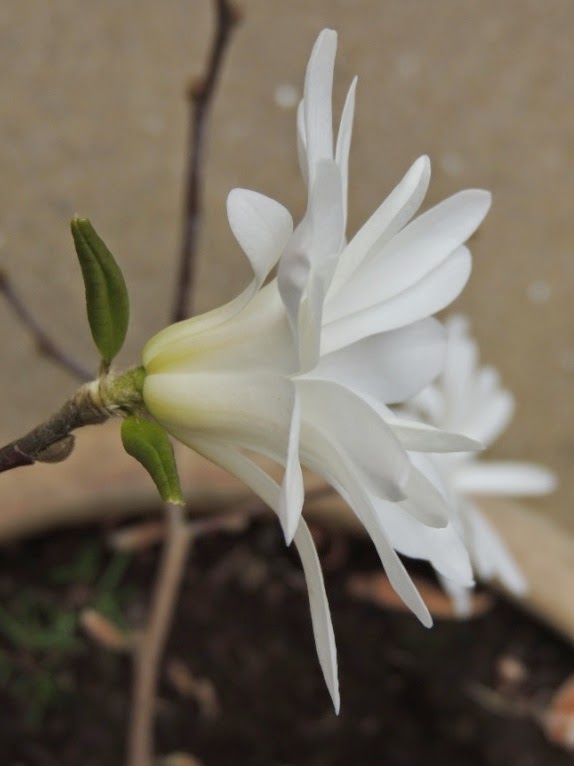Monday, August 10, 2015
Tree Following: Star
Recently my health became a little worse than normal and it has been a struggle to find the motivation to blog. I'm very grateful the Lucy from Loose and Leafy has left me little reminders to join the Tree Following project.As I'm quite a few month behind, I'll start with the smallest of the two trees I'm following and bring us up to speed with what's been happening with it. Then in future Tree Following posts, I'll upload photos of a second tree I've been photographing this year.
As I can't get out much, I've decided to follow a couple of trees in my garden. When we moved here around 4 and a half years ago the garden was a blank slate of grass on clay. To be honest, it hasn't changed much, but we have been gradually adding trees, shrubs, bulbs, and annuals.The tree that I'll blog about today is a Magnolia stellata, commonly known as the star magnolia. This post will primarily be lots of photos as the star magnolia flowers early in the year before it throws out its leaves. This means that the bulk of 'interest' happens early in the year, with the majority of the rest of the year being collecting sunlight and making energy to grow and develop the flower buds before the following winter.
So, without further ado, I bring to you: Star...
March:
During the winter, there are no leaves on the tree, which gives it a rather skeletal appearance - but this is ok because the blooms more than make up for it. As you can see, to protect against the cold of winter, the star magnolia protects the flower buds with a furry coat.
As the time for flowering approaches, the bract casings protecting the flower bud gradually fall off; revealing a delicious-looking flower bud with a pinkish stripe that fades as the flower opens.
April:
Eventually the flower opens, revealing many spreading white tepals - which give the star magnolia its name. Each tepal is quite narrow, but up to 2" to 3" in length.
The photo above provides a closer look at the reproductive parts of the flower. There are many cream stamens surrounding many carpels. You may notice that the stamens are quite flat and there is no distinct anther and filament sections - this is a link that shows Magnolias to be an ancient genus. These stamens are known as relictual features and as such have not undergone a great deal of evolutionary change.
A final couple of photos, one showing the full tree with flowers in various stages from recently opened to a stage where the petals have fallen off. The final photograph shows the depth of the whole flower - I quite like this shot.
Well thanks for reading my first Tree Following post. For more information on Tree Following please visit the Loose and Leafy blog.
References
James D. Mauseth, 2012. Botany: An Introduction to Plant Biology. 5 Edition. Jones & Bartlett Learning.
Subscribe to:
Post Comments (Atom)









No comments:
Post a Comment